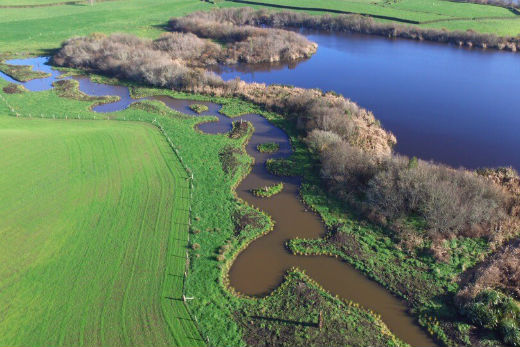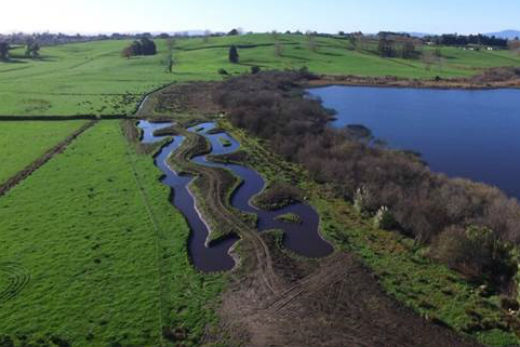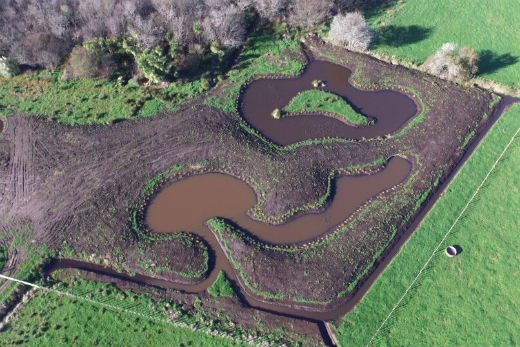Silt traps have been created on two Waikato peat lakes Ruatuna and Rotomānuka by Living Water partners, Fonterra and the Department of Conservation.
Described as ‘critically threatened' under the Land Environments of New Zealand Threatened Environments Classification, peat lakes are globally rare ecosystems. And the Waikato region is home to more than 30 of them.
Aerial images captured by drone of new silt trips at Lakes Ruatuna and Rotomānuka.
The Waikato Peat Lakes area is one of five key catchments where Fonterra and DOC work on their Living Water partnership programme.
Living Water Fonterra North Island Project Manager Tim Brandenburg says the peat lakes are an integral part of New Zealand's landscape, with silt traps a key contributor to restoring lake water quality.

'The majority of pollution comes from sediment and excess nutrients that drain off cleared lands surrounding the lakes. Silt traps are like a vital organ the ecosystem needs to recover – they act like a kidney.
'We're artificially creating what would normally happen in nature – when a stream meanders through a wetland, and filters out silt coming downstream,” says Tim.
These culturally and historically important peat lakes are a significant focus for Living Water, as part of its mission to improve water quality and increase the abundance of native wildlife in five catchments where intensive dairying exists.
DOC Living Water Waikato Site Lead Mike Paviour says, 'We've given the lakes the equivalent of a kidney transplant.
'On top of that, we're planting both the silt traps and lake edges with thousands of native wetland plants to provide habitat for native wildlife.

'We're excited to see the native species thrive as habitat becomes established, and we'll be working to improve public access so everyone can enjoy it,” says Tim.
Living Water works with farmers, iwi, hapu, community groups and key stakeholders to improve the abundance and variety of native wildlife and water quality.
The Waikato Peat Lakes catchment includes three lakes where Living Water continues on its mission to help restore Waikato's unique peat ecosystems.
The other Living Water catchments are Kaipara Harbour's Hikurangi catchment, Tīkapa Moana (Firth of Thames) Pūkorokoro/ Miranda catchment, Waikato peat lakes focusing on Lakes Areare, Ruatuna and Rotomānuka, Te Waihora (Lake Ellesmere) in Canterbury focusing on the Ararira LII catchment and Awarua -Waituna in Southland focusing on Waituna catchment.



3 comments
What
Posted on 13-08-2016 14:10 | By Capt_Kaveman
does not happen in nature is fonterra's pollution
@ Capt_Kaveman
Posted on 13-08-2016 15:46 | By Crash test dummies
You are referring to water but don't forget the air, soil and the products that they create. All suffer the same fate of "manufactured" to maximize profits and bonuses, nothing to do with earth health and the people wellbeing. Skim the good stuff out of the milk and export it, see what is left to NZ public with a fancy price tag. The NZ Meat industry is no better.
Who
Posted on 13-08-2016 18:46 | By chewy
The Waikato River is the cleanest it's been in a long time but no mention of that. Instead criticise a company that is being proactive in cleaning up our waterways. The Hamilton City council spilt raw sewage into the river several years ago but that was ok .Norske Skoog Pulp and paper co are still turning the Tarawera River black also ok?There are at least 3 other Dairy companies operating in the north Waikato, including a Chinese owned one at Pokeno.
Leave a Comment
You must be logged in to make a comment.